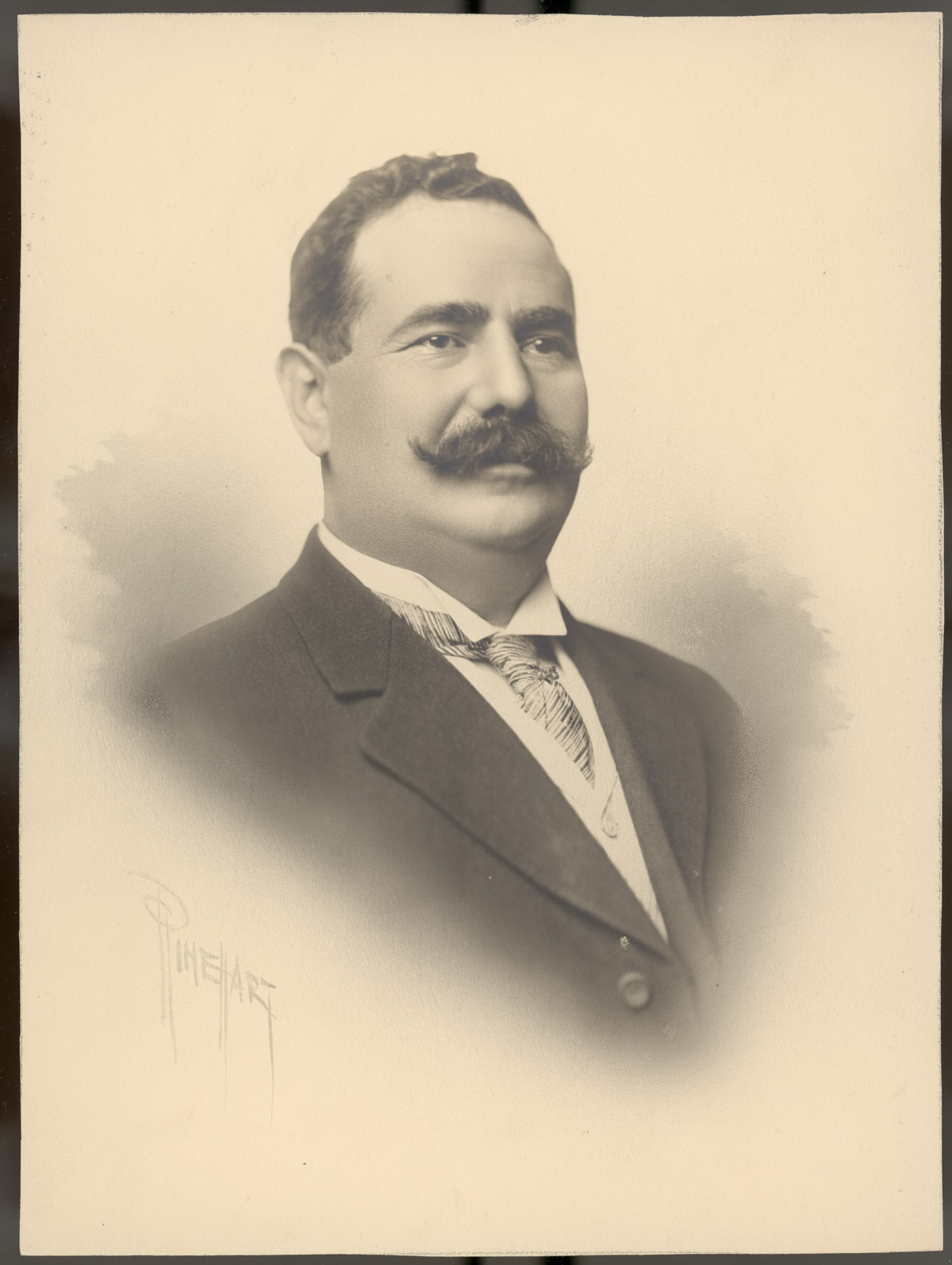 Emil Brandeis. NSHS RG2411.PHO-565 (at left).
Emil Brandeis. NSHS RG2411.PHO-565 (at left).
Lately the news has been full of stories about the sinking of Titanic and the reissue of James Cameron’s movie about its fateful first and only voyage. Sunday, April 15, 2012, marks the one hundredth anniversary of Titanic’s loss. The supposedly unsinkable flagship of the White Star line went down at 2:20 a.m. on April 15, 1912, after striking an iceberg. Some 1,500 passengers and crew lost their lives. Interestingly, several Nebraskans or future Nebraskans had connections to this famous disaster.
One of the fatalities was forty-eight-year-old Emil Brandeis of Omaha, a partner with his brothers Arthur and Hugo in the well-known Brandeis department store. Emil had been visiting Europe and was returning to the United States. His body was recovered and his cremated remains were buried in Omaha. His pocket watch, found on his body, is in the collections of Omaha’s Durham Museum.
Carl Olaf Johnson, twenty-one, was coming to Nebraska from his native Sweden to join his brother Eric, a Saunders County farmer. Johnson jumped from Titanic before the ship went down and clung to a piece of wreckage until picked up by a lifeboat. He reached his brother’s farm in Nebraska, was drafted to serve in World War I, and died in Wahoo in 1978. His experiences earned him the nickname “Titanic Carl” Johnson.

From the Kearney Daily Hub, May 7, 1912.
Like Carl Johnson, Victor Halva, a twenty-year-old Moravian, was leaving Europe to avoid military conscription. Unlike Johnson, Halva did not buy a ticket on Titanic but instead, managed to sneak aboard as a stowaway. He, too, was plucked from the icy North Atlantic by one of the lifeboats. Halva came to Lynch, Nebraska, where his uncle lived, and later moved to O’Neill, where he died in 1958. He also served in the U.S. military during World War I.
John Kuhl of Randolph, Nebraska, was traveling to Europe on board Carpathia and witnessed that vessel’s rescue of Titanic survivors. Kuhl, who had previously been speaker of the house in the Nebraska Legislature, had to defer his European trip when Carpathia returned to New York with the rescued passengers.
If you want to read more about these men, see Edward K. Tryon, “Nebraska Connections to a Titanic Disaster,” Nebraska History 78 (Summer 1997).
– James E. Potter, Senior Research Historian/Publications



